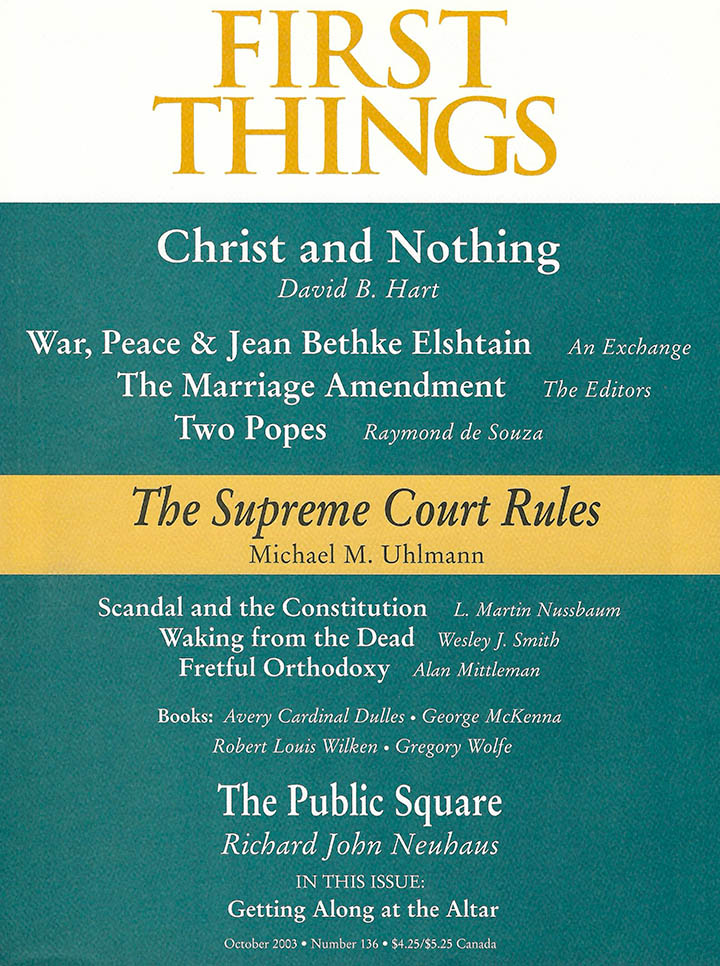The Church in a Postliberal Age
by George A. Lindbeck
edited by James J. Buckley
Eerdmans, 300 Pages, $27
George Lindbeck was almost predestined to eminence in the fields of ecumenism and interreligious dialogue. After living his first seventeen years in China as the son of missionary parents, he received a strong Lutheran education in Minnesota. Then as a graduate student at Yale he wrote a doctoral dissertation on Duns Scotus. At Vatican II he was one of several observer delegates appointed by the Lutheran World Federation. Thereafter he taught many years at Yale, becoming an emeritus professor in 1993. As a teacher he formed a generation of outstanding theologians. He also participated in innumerable dialogues, especially with Roman Catholics. For some years he was the Lutheran cochairman of the Lutheran/Roman Catholic Joint Commission.

